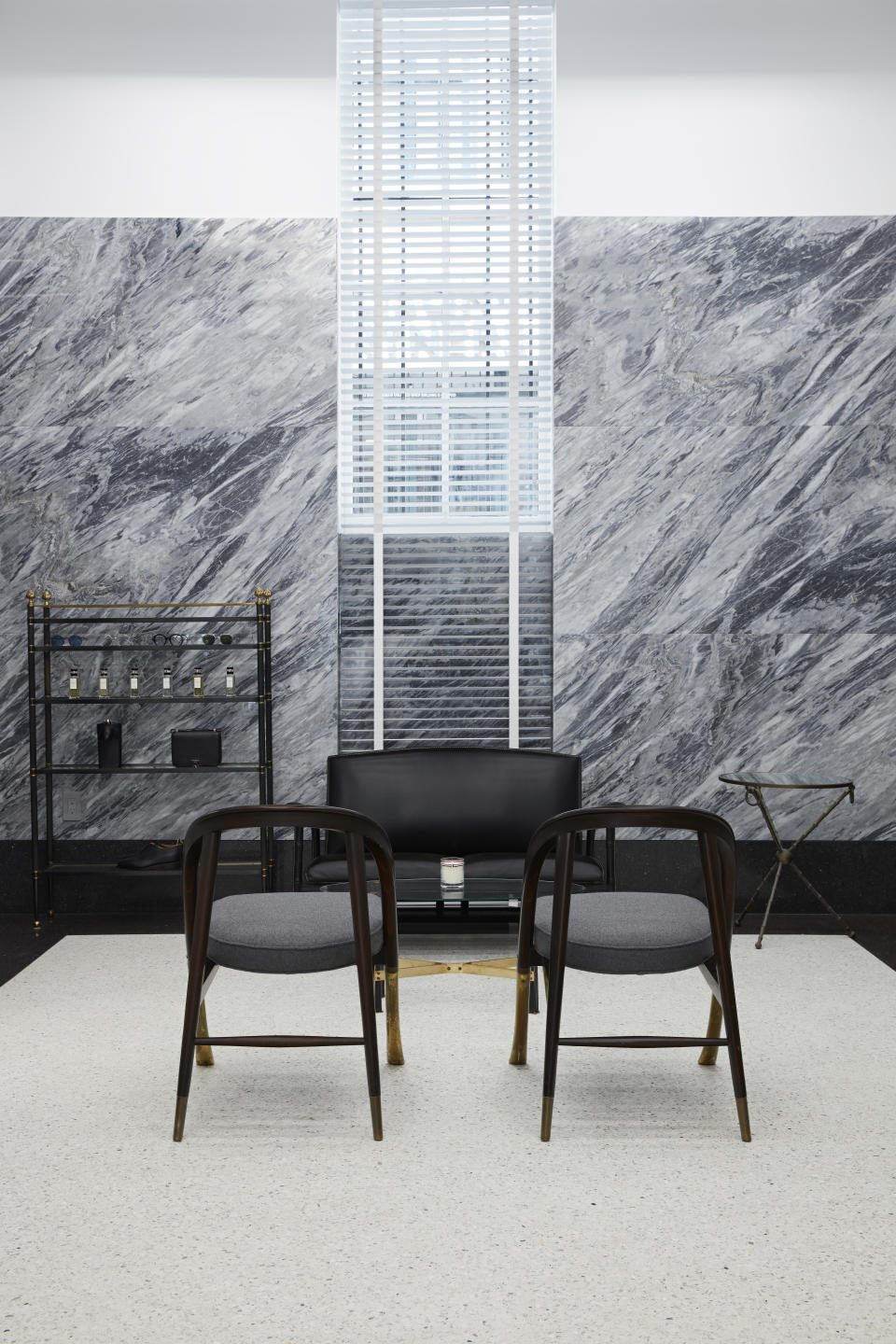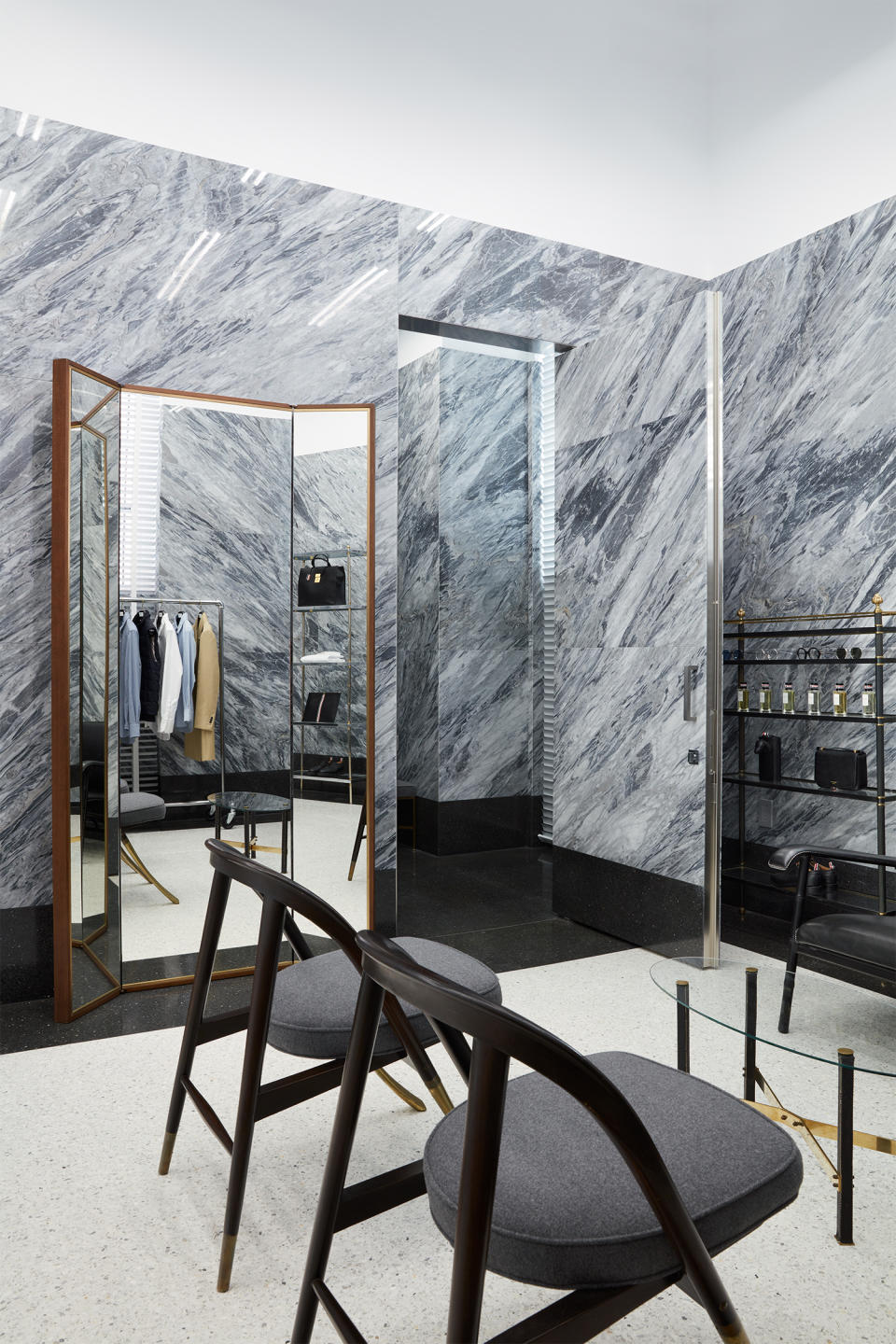Thom Browne Continues to Roll Out Retail
- Oops!Something went wrong.Please try again later.

Thom Browne has big ambitions when it comes to physical retail.
On Friday, the luxury brand will open its 96th store in San Francisco. But that’s just the latest in a rollout strategy that will see the company’s brick-and-mortar presence increase to 150 within the next four to five years.
More from WWD
Louis Vuitton, Burberry, Thom Browne, Ralph Lauren, Moschino and Gucci Reigned at the 2022 Met Gala
A Closer Look at Catherine O'Hara's Custom Thom Browne Look at the SAG Awards
Rodrigo Bazan, chief executive officer of Thom Browne, said those numbers sometime surprise people who don’t realize the size of the company and its reach.
In reporting its first-half results in late August, Ermenegildo Zegna Group said Thom Browne’s sales rose 30 percent to 185.8 million euros, compared with 142.5 million euros last year. Adjusted operating profit was up 13.4 percent to 31.5 million euros, compared with 27.8 million euros last year.
“Most people think Thom Browne is a smaller business than it is and that is has less stores,” Bazan said.
But this increases the opportunity to build brand awareness — and much of that will center around retail expansion.
Most of the brand’s fleet is in Asia — the largest number of stores are in mainland China, Japan and South Korea — and there are units in London, Dubai, Milan and St. Tropez with a made-to-measure atelier in Paris.
Although Browne is based in New York, there are only six stores in North America, counting San Francisco. While the company will add a store on Copley Square in Boston before the end of the year, its owned retail presence here is still quite small.
That’s ironic because Browne got his start opening a made-to-measure store in New York that he funded out of his own pocket, Bazan said. “He’d be in the store doing his own measurements.”
In the two decades since the brand was founded, it was slow to add other stores until fairly recently.
“If you split the 20 years of the brand into 10 years, there were less than 10 stores in the first 10 years, only three or four of which were directly operated,” Bazan said. “But since I joined in 2016, we went from 14 to 96, 57 of which are directly operated.”
The retail strategy, he said, is to test markets first to ensure there is a customer base there before opening stores. He used Beijing as an example, saying that after the first store developed a following, the company added five more in 18 months.

“There’s never a race to open as many stores as possible,” Bazan said.
Instead, the brand has also been working over the past few years to build its offering, particularly its women’s collection, and focus on what he called “clienteling,” or getting to know everything it can about its customers and engage with them to fulfill their needs.
“We have almost a religious approach to clienteling in this company,” he said.
Knowing its customers also helps inform where future retail stores should be added.
“It’s not about being on every potential key street or mall but being where the customer is,” he explained. “We evaluate the market and the area of the city so they’re the right locations for our clients. And we open carefully — that’s a strength for us.”
The San Francisco store, for example, is located in the historic Yeon Building in Jackson Square. The 1,250-square-foot space, which is being designed in collaboration with Flavio Albanese of ASA Studioalbanee, will feature the company’s signature midcentury modern style, slat blind-covered windows, fluorescent tube lighting, white Calcutta and Carrara marble floors and walls. In addition to the men’s and women’s ready-to-wear, tailoring and accessories, the store will offer eyewear and fragrances.
“It’s a beautiful area, similar to TriBeCa,” Bazan said, referencing where Browne opened his first New York store. “We don’t spend much time in the traditional retail areas, but this has a fantastic selection of design stores and restaurants — places Thom enjoys spending time when he’s in San Francisco. And we have a very significant client base in San Francisco and this is a way to get closer to them and serve them from a local store.”
Beyond San Francisco, Bazan said the company is looking at other cities in California, as well as Chicago as potential locations for other stores in the U.S.
Because most of the stores are relatively small — 1,500 to 2,000 square feet with a clean and minimal aesthetic — they’re easy to execute when a location is identified, Bazan said. “Once we find the right fit with the landlord, we are very quick to turn something around. Boston was not even a discussion eight months ago.
“I think the great thing about Thom’s original concept is that it’s a midcentury-inspired environment, nothing is built on the walls, therefore it doesn’t age,” he added. The only difference is the furniture, “because it’s largely all vintage.”

Out of the 96 stores, 20 percent are men’s only, 10 percent are women’s only and the remainder are dual gender.
Within the stores, Bazan said tailoring, outerwear, knitwear and skirts have historically been the bestselling items. That is similar to the company’s performance at wholesale, but shoppers have more to choose from in the Thom Browne stores.
The stores also offer the brand the opportunity to showcase its category extensions such as childrenswear. In some cases, such as Milan and London, this has prompted the company to split its men’s and women’s offerings into separate retail stores or to develop a new merchandising concept. In the case of the kids’ collection, Browne devised a way to show the line in leather trunks within the store that highlight the collection without taking up a lot of space.
“It’s not a one-size-fits-all approach,” Bazan said.
He stressed that wholesale will continue to be important to the company going forward. “The majority of our business will be [direct-to-consumer] in the future, but we love wholesale,” he said. “We are in almost 300 doors globally and it’s a great way to expand brand awareness. Each time we open a store, it’s an opportunity for us to grow wholesale.”
Online will also play a big part in the future of the business, he said. When Bazan joined he set out to expand into women’s as well as direct-to-consumer. He tested the waters by partnering first with Farfetch, which helped the company create an omnichannel business and also allowed it to ship globally. “Our lack of infrastructure was actually a blessing because we could just fast forward and use technologies that were coming up and we could partner with other platforms,” he said.
In addition to expanding its own direct-to-consumer presence through online and retail stores, Bazan said the other goals for the company going forward are to double the number of clients as well as womenswear sales. Women’s represents 40 percent of the overall Thom Browne business.
“We’re aiming to double the business, but not necessarily the quantity of stores,” he said. “Women’s has opened up a gigantic opportunity in North America and we know that’s going to be the majority of the business in the future.”

